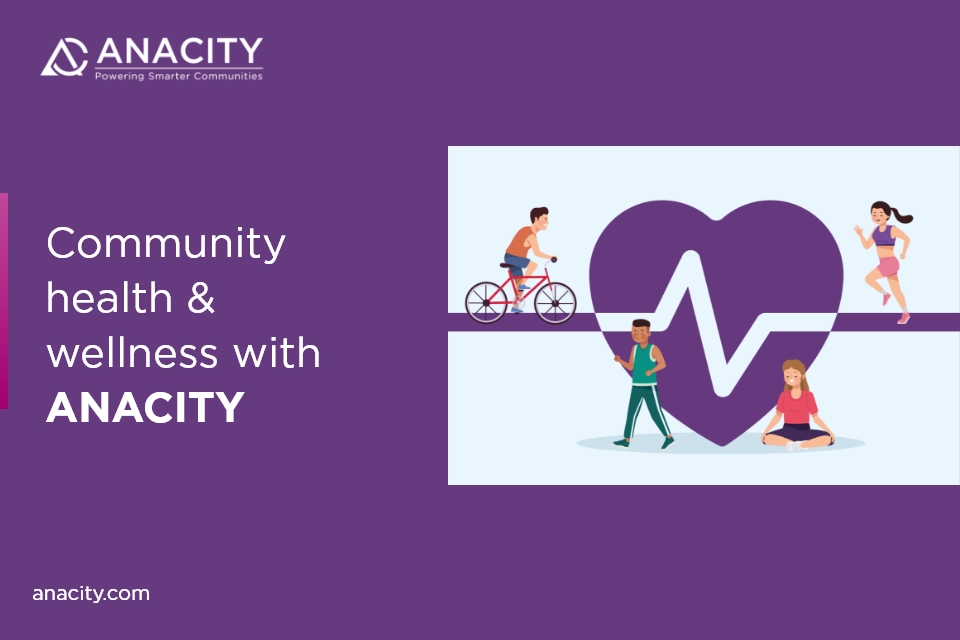There has been a focused move towards promoting health and wellness in built environments. Studies have shown that people living and working in concrete jungles often have fewer restorative means. Hence, these elements have to be incorporated into the built environment by other means. While investing in green areas with parks and gardens is important, other tools can be equally vital.
We have to build resilience by promoting sustainable lifestyles, developing climate-smart infrastructure, strengthening emergency preparedness, protecting natural resources, and investing in green technologies. In the last few years, there has been increased stress on these measures, particularly climate-smart infrastructure, emergency preparedness, and green technologies.
Addressing challenges in adopting health and wellness
Lack of wellness strategy: A holistic understanding of wellbeing in the built environment sector is emergent, but not yet mainstream. For communities without a wellbeing strategy, action on wellbeing is largely ad hoc, reactive and campaign-led; therefore, the potential to create sustained behaviour change is limited.
Retrofitting older buildings: Smart lighting, better thermal comfort, and enhanced indoor air quality are three crucial aspects of improving occupant health and wellness. But sustainable wellness technology is evolving at a fast pace. Consequently, it raises the challenge of retrofitting old buildings. Fast-developing technology also raises concerns about the lifespan of such solutions.
Modifying human behaviour: Technology and building construction can only go so far. The biggest contributing factor to leveraging green technologies lies in the people who live and work in these buildings. It is imperative to initiate a shift in the human mindset and behavior to bring effective change.
Preparing for extreme weather events
Extreme weather events have seen a staggering increase in recent years with more than 7,348 major natural disasters occurring in the 2000-2019 period, killing 1.23 million people and creating a global economic loss of $2.97 trillion. In comparison, there were 4,212 natural disasters in the previous 20-year period – 1980-1999.
The focus, therefore, has to shift towards preparing for these events to ensure health and wellness. Technology can be a powerful tool here, particularly in building climate-smart infra, enhancing emergency preparedness, and addressing social isolation.
Climate-smart infra
Today, we have green technologies that can lower energy consumption. Increasingly, we will depend on IoT devices like smart thermostats or lighting systems to monitor and regulate power usage. But how do we make it effective and take it community-wide? The answer lies in climate-smart infra that integrates green technologies with community automation software like ANACITY.
For instance, by integrating the software with metered utilities like piped gas or electricity, we can track energy consumption. This information is critical in creating more energy-efficient policies. For instance, we can incentivise energy saving during peak hours. Or we can plan heavy usage, such as running heavy-duty cleaners, during off-peak hours.
Emergency preparedness
As the saying goes, prepare and prevent, not repair and repent. When we cannot control the course of events, the first step should be to prepare for its inevitability. This is where a community automation system becomes so critical. It plays two key roles in emergency preparedness and response – of storing important information and collaboration.
Let’s take a simple example of fire risk preparedness. So, you start with putting all emergency information – what to do in case of fire, peaceful evacuation – on the ANACITY app. Then you ensure that every resident is aware of this with drills. This is where an information platform becomes even more important. You can also form and coordinate response groups.
Social isolation
In the modern gated community, social isolation is a very real problem. In the lack of traditional communities, how do you reach out to others? Community communication platforms like ANACITY can play an important role here. It’s where residents reach out to others for help. New residents can find important information on their localities or find like-minded people.
Studies now show that health & wellness in the built environment are essential in boosting human productivity and improving the residential experience. Technology can play a vital role here, creating awareness and bringing people together.
Learn more about how ANACITY can help in building sustainability here and how OAMs can Promote Sustainability in Multi-Family Properties.
As embedded tech becomes a ubiquitous part of our living spaces, integrated digital platforms like ANACITY will become critical in fostering social connectedness, facilitating access to amenities, and improving mental wellness.

